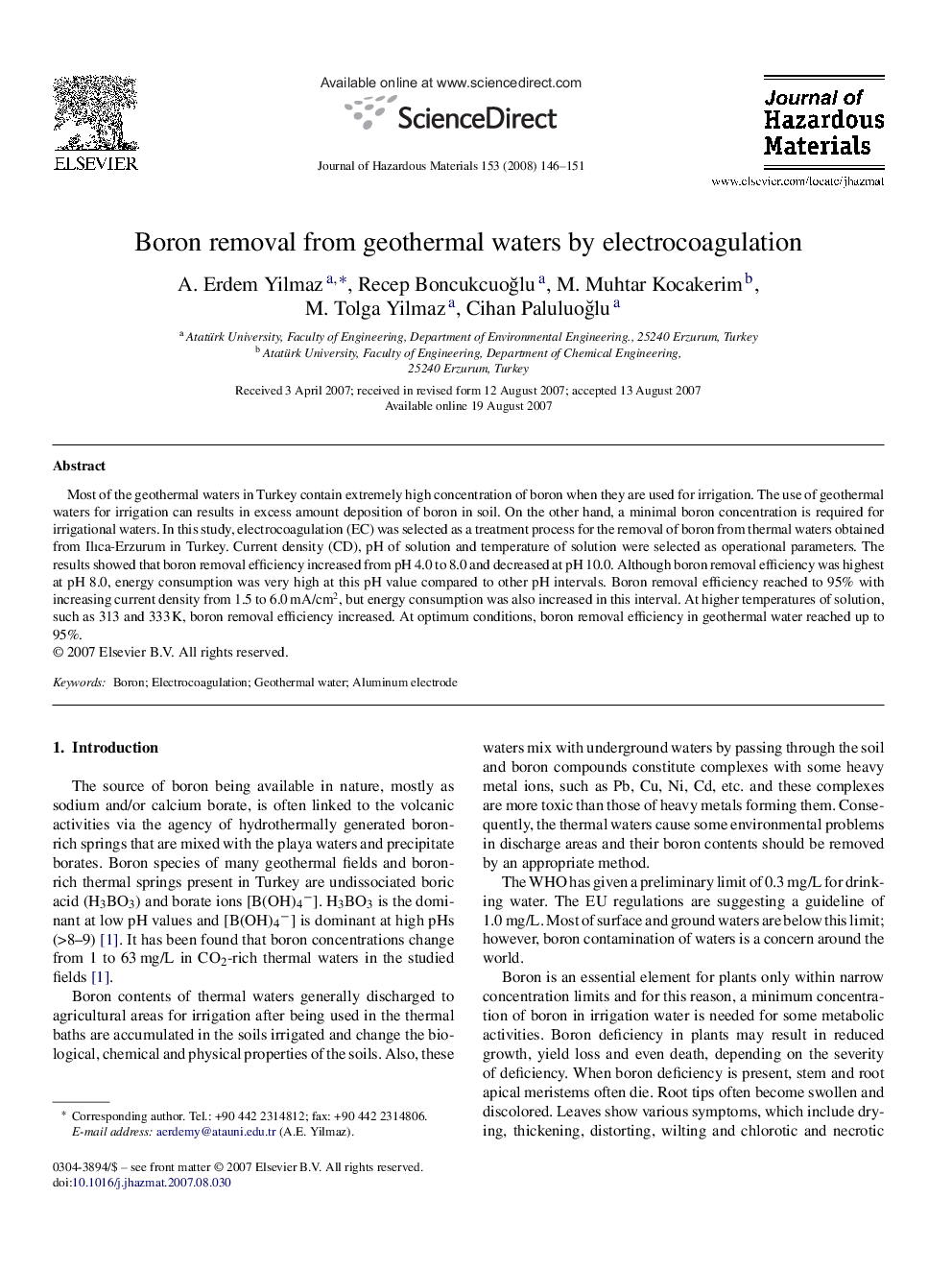| Article ID | Journal | Published Year | Pages | File Type |
|---|---|---|---|---|
| 583092 | Journal of Hazardous Materials | 2008 | 6 Pages |
Abstract
Most of the geothermal waters in Turkey contain extremely high concentration of boron when they are used for irrigation. The use of geothermal waters for irrigation can results in excess amount deposition of boron in soil. On the other hand, a minimal boron concentration is required for irrigational waters. In this study, electrocoagulation (EC) was selected as a treatment process for the removal of boron from thermal waters obtained from Ilıca-Erzurum in Turkey. Current density (CD), pH of solution and temperature of solution were selected as operational parameters. The results showed that boron removal efficiency increased from pH 4.0 to 8.0 and decreased at pH 10.0. Although boron removal efficiency was highest at pH 8.0, energy consumption was very high at this pH value compared to other pH intervals. Boron removal efficiency reached to 95% with increasing current density from 1.5 to 6.0 mA/cm2, but energy consumption was also increased in this interval. At higher temperatures of solution, such as 313 and 333 K, boron removal efficiency increased. At optimum conditions, boron removal efficiency in geothermal water reached up to 95%.
Related Topics
Physical Sciences and Engineering
Chemical Engineering
Chemical Health and Safety
Authors
A. Erdem Yilmaz, Recep BoncukcuoÄlu, M. Muhtar Kocakerim, M. Tolga Yilmaz, Cihan PaluluoÄlu,
